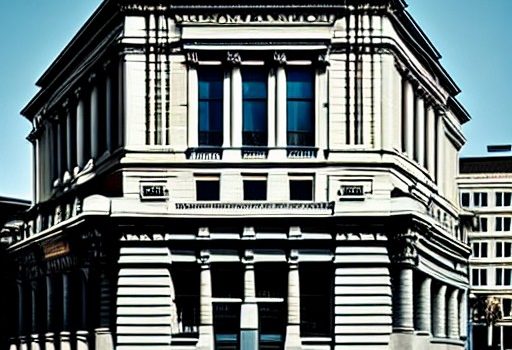
Introduction
The commercial real estate sector has been hit hard by the pandemic, with rising delinquencies and defaults putting pressure on US banks. As businesses struggle to pay their rent and mortgages, lenders are facing increasing losses and uncertainties. In this blog post, we take a closer look at the consequences of rising delinquencies in commercial real estate lending for US banks. We’ll explore how banks are responding to these challenges and what this means for the future of the industry. So grab a cup of coffee and join us as we dive into this important topic!
The Consequences of Rising Delinquencies
The commercial real estate market has been experiencing rising delinquencies in recent years, due to a variety of factors including the economic downturn caused by COVID-19. The consequences of this trend are significant for US banks that have invested heavily in commercial real estate lending.
One major consequence is an increase in loan defaults and foreclosures, which can be costly for banks both financially and reputationally. Additionally, banks may face increased regulatory scrutiny as a result of these delinquencies.
Furthermore, rising delinquencies may lead to decreased confidence among investors and shareholders, potentially impacting stock prices and overall financial stability.
The consequences of rising delinquencies also extend beyond the banking industry. For instance, small businesses may struggle to secure financing if lenders become more cautious due to increased risk associated with commercial real estate loans.
It is clear that rising delinquencies in commercial real estate lending pose significant challenges for US banks and the broader economy. As such, it is critical that stakeholders remain vigilant in monitoring this trend going forward.
How US Banks are Responding
US banks are taking various measures to respond to the rising delinquencies in commercial real estate lending. Firstly, they are tightening their underwriting standards for new loans and conducting more rigorous due diligence on borrowers. This means that only financially stable businesses with strong cash flows and credit histories will be approved for loans.
Additionally, banks are also working closely with existing borrowers who may be struggling to make payments due to the economic impact of COVID-19. They are offering loan modifications such as forbearance agreements or restructured payment plans in order to help these businesses weather the storm.
Furthermore, some US banks have started divesting their exposure to risky assets by selling off non-performing loans or restructuring their portfolios towards safer investments. This helps them reduce potential losses from defaults and frees up capital for other purposes.
US banks understand the seriousness of rising delinquencies in commercial real estate lending and are taking proactive steps to mitigate risks while still supporting businesses during these challenging times.
Implications for the Future
With the current economic climate and uncertainty surrounding commercial real estate, it’s important to consider what implications this has for the future. As delinquencies continue to rise, there are a number of factors that could impact US banks in the long-term.
One potential implication is increased regulation from government entities such as the FDIC or OCC. As more loans become delinquent, regulators may step in to ensure that banks have proper risk management practices in place. This could lead to additional reporting requirements or even fines for non-compliance.
Another possible outcome is decreased lending capacity for US banks. If delinquencies continue to rise, banks may become more hesitant to lend money for fear of increasing their own risk exposure. This could make it harder for businesses looking to expand or invest in new property.
Additionally, rising delinquencies could lead to further consolidation within the banking industry as smaller institutions struggle with loan losses and decreased profits. Larger banks with greater resources may be better equipped to weather these challenges and potentially acquire struggling competitors.
It’s also worth considering how rising delinquencies will affect investors who hold commercial real estate debt securities. As defaults increase, those holding these securities may see reduced returns or even loss of principal investment.
While it’s impossible to predict exactly how rising delinquencies will play out in the long-term future of US banking and commercial real estate industries; one thing remains certain: proactive risk management measures by both lenders and borrowers can help mitigate some potential negative impacts down the line.
Conclusion
The rising delinquencies in commercial real estate lending pose a significant threat to US banks. While the economic fallout from the COVID-19 pandemic has played a major role in this trend, there are also underlying issues with CRE lending standards that must be addressed. Banks have responded by implementing stricter underwriting guidelines and increasing their reserves for potential losses.
Looking ahead, it is difficult to predict exactly how the situation will evolve. However, it is clear that lenders must remain vigilant and proactive in managing their portfolios and assessing risk. With an uncertain economic outlook and ongoing challenges facing certain segments of the commercial real estate market, caution will be key moving forward.
Ultimately, addressing these challenges will require collaboration between financial institutions, regulators, borrowers and investors alike. By working together to mitigate risks and ensure sustainable growth over the long term, we can help safeguard against future crises while continuing to support business activity across America’s diverse economy.










